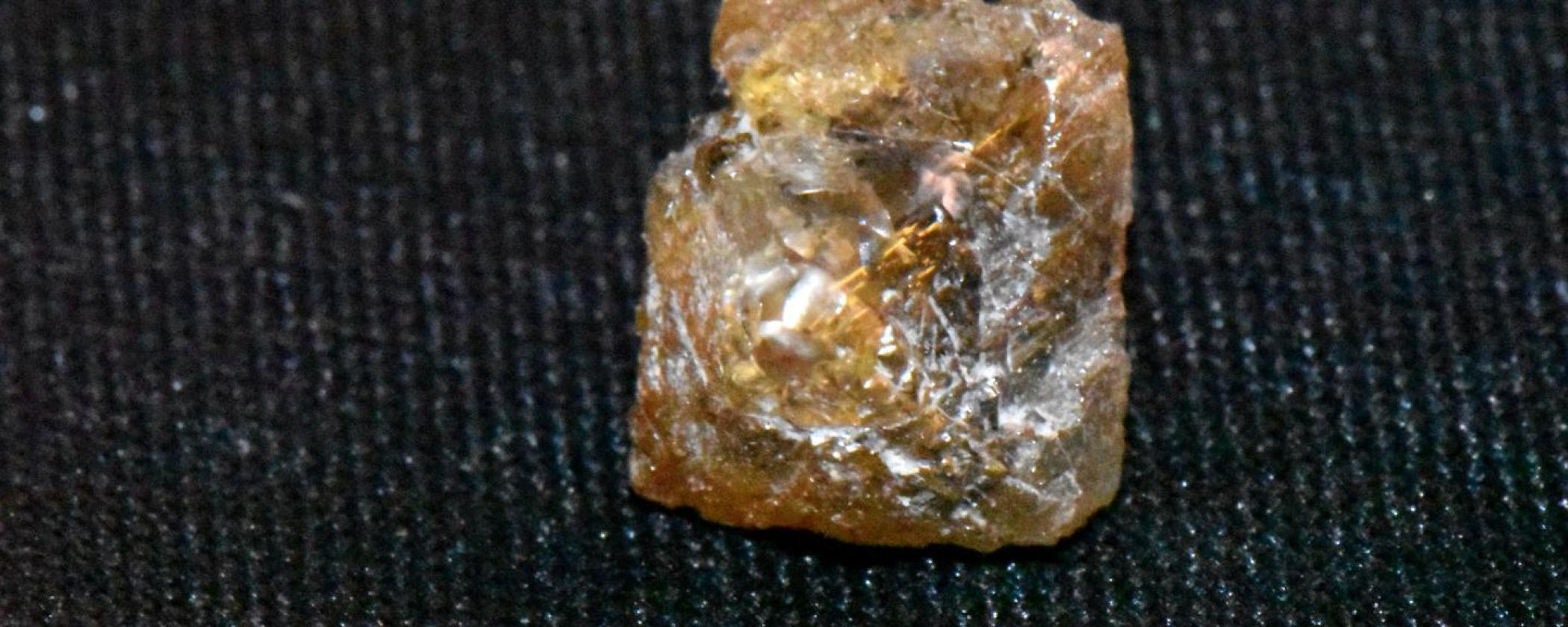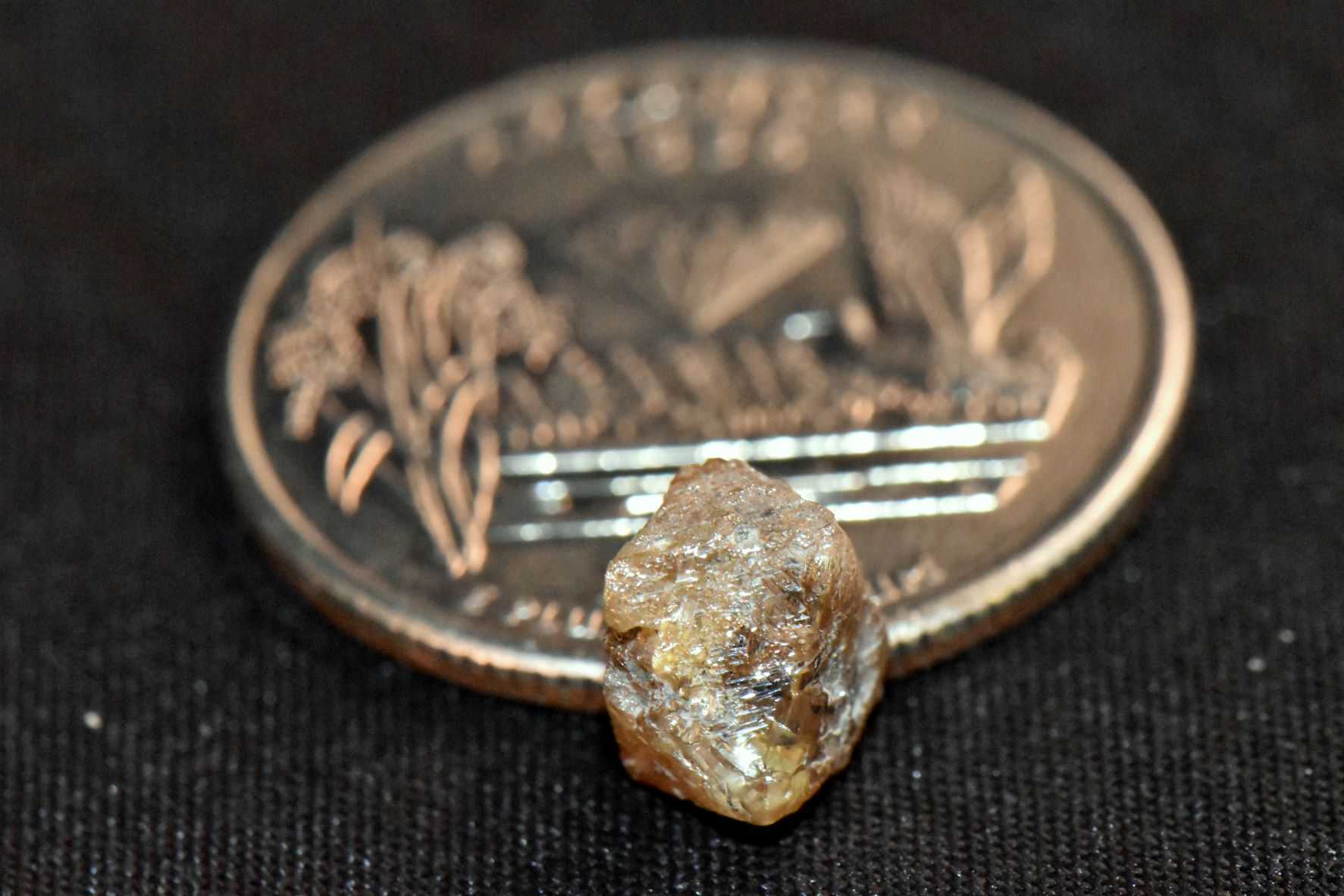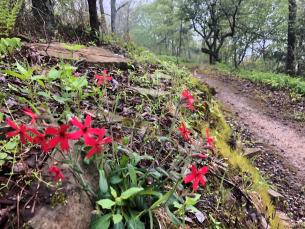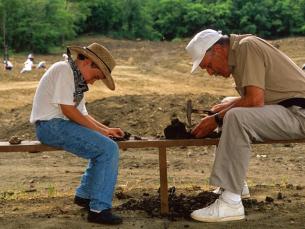

A regular visitor to Arkansas’s Crater of Diamonds State Park recently discovered a 3.29-carat brown diamond in his wet-sifted gravel. It is the largest diamond found at the park this year and the largest since September 2021.
David Anderson, of Murfreesboro, spotted the gem on Saturday, March 4, while wet-sifting soil from the West Drain of the park’s 37.5-acre diamond search area. “At first I thought it was quartz but wondered why it was so shiny,” said Anderson. “Once I picked it up, I realized it was a diamond!”
Anderson first learned about Crater of Diamonds State Park while watching The Travel Channel in 2007. He said, “My first trip here was in 2007. After I found my first diamond, a 1.5-carat white, I was hooked!”
Anderson has found more than 400 diamonds over the past 16 years, including 15 weighing over one carat. His other top finds include a 3.83-carat yellow diamond found in December 2011 and a 6.19-carat white gem discovered in April 2014.
Finders of Crater diamonds often choose to name their gems. Anderson named his diamond B.U.D. “That’s for Big, Ugly Diamond,” said Anderson, noting the diamond’s pitted surface and mottled brown color. Anderson typically sells his diamonds locally and said he also plans to sell this one.
“Mr. Anderson’s diamond is about the size of an English pea, with a light brown color and octahedron shape,” said Park Interpreter Tayler Markham. “It has a metallic shine typical of all diamonds found at the park, with a partially resorbed surface and lots of inclusions.”
Markham notes that all diamonds found at Crater of Diamonds State Park have gone through partial resorption during the eruption that brought them to the surface. “Magma in volcanic pipe melted the diamonds’ outer surfaces and gave them smooth, rounded edges. Larger diamonds like Mr. Anderson’s may have rough areas on the surface, but you can still find signs of resorption on the corners and edges.”
Anderson’s diamond is the largest gem park staff have registered since September 2021 when a visitor from Granite Bay, California discovered a 4.38-carat yellow diamond at the site. It is the largest brown diamond from the park since the Kinard Friendship Diamond, a 9.07-carat gem found on Labor Day 2020. The Kinard Friendship Diamond was discovered by Kevin Kinard of Maumelle and is the second-largest diamond found at Crater of Diamonds State Park.
As of this publication, 124 diamonds have been registered at Crater of Diamonds State Park this year. An average of one to two diamonds are found by park visitors each day. Check out these tips for visiting the Crater during the spring.
Quick Facts about Crater of Diamonds State Park
Diamonds come in all colors of the rainbow. The three most common colors found at Crater of Diamonds State Park are white, brown and yellow, in that order.
In total, over 75,000 diamonds have been unearthed at the Crater of Diamonds since the first diamonds were discovered in 1906 by John Huddleston, a farmer who owned the land long before it became an Arkansas State Park in 1972.
The largest diamond ever discovered in the United States was unearthed in 1924 during an early mining operation on the land that later became Crater of Diamonds State Park. Named the Uncle Sam, this white diamond with a pink cast weighed 40.23 carats. It was later cut into a 12.42-carat emerald shape. The Uncle Sam is now part of the Smithsonian’s mineral and gem collection and can be seen at the National Museum of Natural History.
Another well-known diamond from the park is the Strawn-Wagner. Found in 1990 by Murfreesboro resident Shirley Strawn, this 3.03-carat white gem was cut into a round brilliant shape weighing 1.09 carats. It graded as ideal cut, D-colorless and flawless and was set in a platinum and 24-carat gold ring. In 1998, the state of Arkansas purchased this diamond for $34,700 in donations and placed it on permanent display at the park visitor center.

